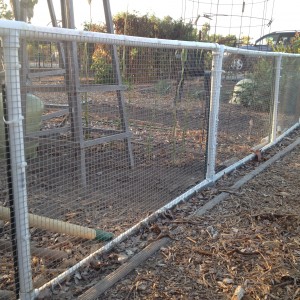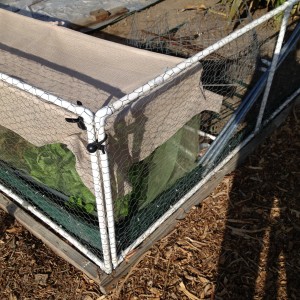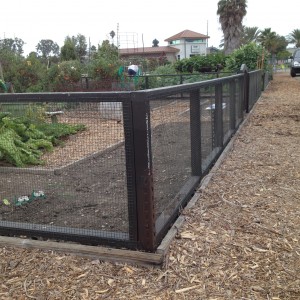 Perimeter Fencing Requirements and Recommendations
Perimeter Fencing Requirements and Recommendations
To add or replace fencing, plans for new and existing plots, including materials and design, must be submitted to fencing@lbcg.org, for approval in advance of installation. Approval will be provided within 5-7 days or earlier, if possible.
In addition to the guidelines provided in the LBCGA Rules and Regulations, the following is helpful information regarding fencing of individual plots:
Optimal Fencing
To ensure stability, a series of rectangular sections with horizontal bars, creating a frame is ideal. Preferred materials for fencing framework are PVC tubing or wood 2 X 4s (cannot be treated). Fencing used over the frame can be galvanized chicken wire, wire mesh or a similar material. Due to safety issues, plastic fencing can only be used with this framed fencing structure.
The fence should have an upper horizontal rail that will define the overall height of the fence (at approximately 2 feet) and a matching lower rail resting on grade that will support the upper rail by vertical supports. The fence cannot be attached directly to the border boards. To prevent excessive sag in the upper rail, the vertical supports should be installed with spacing not to exceed 4-5 feet. The fence should be secured in a vertical and rigid manner by using supports, such as fence pots, rebar, etc.) driven into the ground at sufficient depth to provide rigid members for secure the fencing and to prevent leaning into common walkways. Sections can be installed semi-permanently or in a manner that allows section removal for ease of garden access (bungee cords). Cost to build a stable fence will vary depending on materials used: basic wood fence with gate is estimate to cost a minimum of $200; PVC will start at around $350.
Walk around the gardens and look at existing fences but a few optimal examples are:



Adequate Fencing
If you are unable to install the fencing described above, modified fencing forms can be used, such as simple stakes and fencing. However, consider the safety and durability of these types of fencing; most of these fences do not last more than a year or two. For example, can be dangerous if someone falls on it so cover it with PVC or other material. Plastic fencing is not allowed with a non-framed type of fencing.
KEY POINTS REGARDING FENCING:
1. Place stakes close enough to prevent sagging of fencing; consider a rigid upper horizontal bar.
2. When securing fencing to stakes do not allow sharp wire to stick out into the pathways.
3. Cover any stakes that are sharp or dangerous, for example, rebar, with PVC or other material.
4. Fence should be as close to 2 feet in height as possible and cannot be attached to the border boards.
5. Immediately replace fencing material that sags into pathways.
6. If wood is used, it cannot be made of treated material due to release of chemicals into the soil.
7. No permanent installation is allowed. e.g. concrete, cinder blocks, etc.
